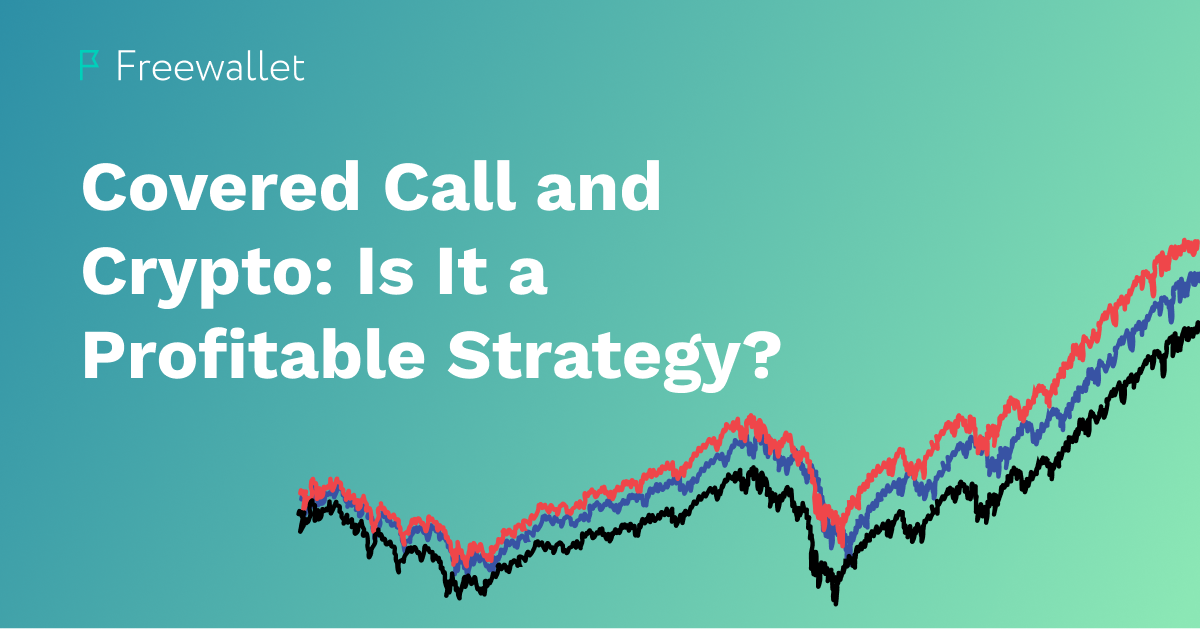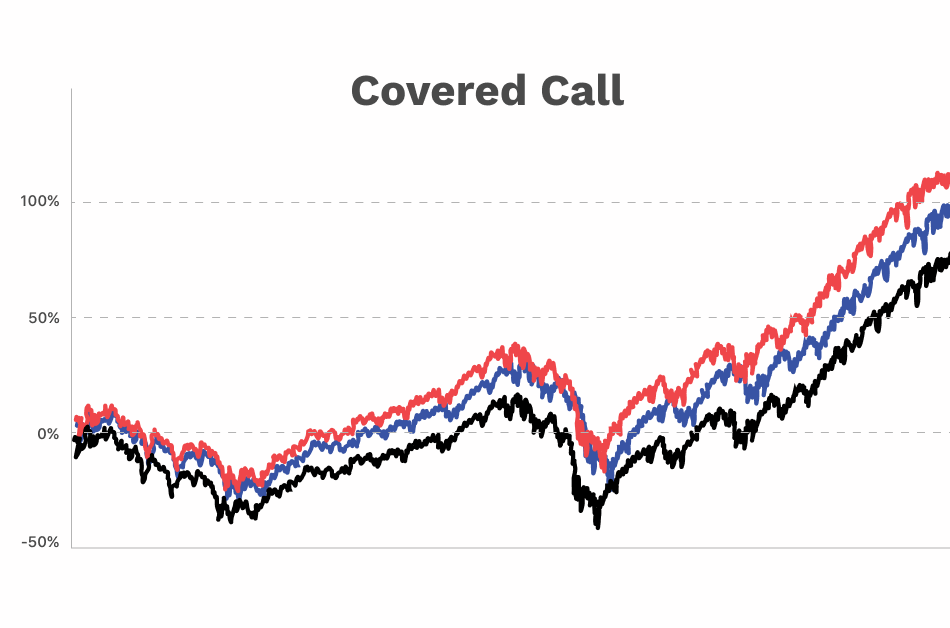
Cryptocurrency trading has seen a surge in popularity in recent years. With it, a variety of trading strategies were introduced to masses of people with little to no prior trading experience. One of the popular strategies is known as a “covered call.” In this article, we’ll discuss the basics of covered calls, including how they work, the risks associated with them, and the specifics of covered calls in the crypto market.
What Is A Covered Call?
First, we should give you a general definition of the call options. A call option gives the buyer the right, but not the obligation, to purchase a security at a specified price (the strike price) before a specific date (the expiration date). The seller of the option is obligated to sell the security at the strike price if the buyer exercises their right. The option premium is the cost of buying the option and is paid to the seller when the option is purchased.

A covered call is an options trading strategy that involves an investor holding a long position in an asset and simultaneously writing (selling) a call option on that same asset to generate income. This strategy is used to generate revenue from a portfolio of assets and can help to mitigate risk in a volatile market.
The term “covered” refers to the fact that the investor is “covered” by the ownership of the underlying asset, which serves as collateral for the call option. In other words, if the call option is exercised, the investor can deliver the underlying asset to fulfill the contract.
In a covered call strategy, the investor will sell a call option with a strike price higher than the underlying asset’s current market price. The investor will receive a premium payment for selling this call option, which represents income for the investor. Suppose the underlying asset’s market price increases beyond the option’s strike price before it expires. In that case, the option will be exercised, and the investor will need to deliver the underlying asset. The investor will keep the premium payment as income if the market price does not increase beyond the strike price before the option expires.
The covered call strategy is attractive to investors because it allows them to generate income from their portfolios while also mitigating risk. It also allows investors to take advantage of market volatility by enabling them to benefit from both rising and falling markets.
In the cryptocurrency market, covered calls can be used to generate income from digital assets such as Bitcoin and Ethereum. Investors can use this strategy to benefit from both short-term price movements and longer-term trends in the cryptocurrency market. However, it is important for investors to understand that there are risks associated with this strategy, including potential losses if the market moves against them.
As with any other strategy, it works better if you deeply understand the crypto market. Happily, apart from experience and intuition, you can rely on numerous market indicators and chart patterns. These tools help you to predict price movements more precisely. In the previous blog articles, we covered a lot of chart patterns, including the three white soldiers, RSI, hammer candlestick, and others.
How Do Covered Calls Work?
It won’t be a mistake to regard a covered call as a hedged trading method. Traders gain via the option premium while selling the upside portion of the investment. The regular call option is associated with high risk. If the asset price skyrockets, the trader loses a lot of money. That’s why a covered call is a safer strategy. The underlying asset lowers risks and creates additional profit opportunities.
In the covered call trading, the expiration point can be followed by one of two scenarios:
- If the price on the expiration date is higher than the strike price, the buyer buys the asset from the trader at the strike price. The option premium goes to the call seller.
- In the opposite situation (the price goes lower than the strike price), the trader saves both the underlying asset and the option premium. The option of the call buyer expires without bringing them anything.
For more clarity, we provide an example of a covered call trade. You can see it in the next chapter.
Example of A Covered Call
Let’s look at an example of a covered call in the cryptocurrency market.
Let’s say an investor owns 1 Bitcoin (BTC). The current market price of BTC is $20,000. The investor wants to generate additional income from their BTC position, so they decide to sell a call option with a strike price of $21,000 and an expiration date of one month from now. The option premium they receive is $200.
If the market price of BTC remains below $21,000 over the next month, the investor will keep the option premium as income and not have to sell their BTC. For instance, on the expiration date, the price is $20,800. The investor keeps their 1 BTC and gets a premium of $200.
If the market price rises above $21,000 before the expiration date, the investor must sell their BTC at the strike price of $21,000. However, they will still keep the option premium as income. Let’s say on the expiration date, the price is $22,000. The trader sells 1 BTC at the $22,000 price and receives a $200 premium.
Are Covered Calls Risky?
As with any trading strategy, there are risks associated with covered calls. One of the most significant risks is that the investor may miss out on potential profits if the underlying security rises above the predetermined price. This is because the investor has sold away their right to buy the security at the predetermined price.
Another risk associated with covered calls is that the investor may be forced to sell their security at a lower price than they would have received if they had not sold the call option. This is because the buyer of the call option has the right to buy the security at the predetermined price, even if the market price of the security has dropped.
Finally, there is also a risk that the underlying security’s market price will drop significantly before the expiration of the call option. This could cause the investor to suffer a loss on their position as they are required to sell their security at the predetermined price rather than at the current market price.
Cryptocurrency presents an additional layer of risk when it comes to covered calls. As cryptocurrency is highly volatile, there is a greater chance that the market price of the underlying asset will move significantly in either direction before the expiration of the call option. This could result in a considerable loss for the investor if they are required to sell their asset at a lower price than they would have received if they had not sold the call option.
In conclusion, covered calls can be an excellent way for investors to generate income from their existing holdings while still maintaining the potential for capital gains. However, investors should be aware of the risks associated with this strategy. In particular, cryptocurrency presents an additional layer of risk due to its highly volatile nature. As such, investors should carefully consider their risk tolerance and investment goals before engaging in covered calls with cryptocurrency.
Conclusion
Covered calls can be a great way for investors to generate income from their existing holdings while still maintaining the potential for capital gains.
However, it is essential to understand the risks associated with this strategy, especially when it comes to cryptocurrency. Crypto assets’ volatility can be both a factor in increasing the wins and exposing investors to huge losses in case wrong decisions are made. Nevertheless, this strategy is safer than many others.
Related
Stay tuned
Subscribe for weekly updates from our blog. Promise you will not get emails any more often.
Most Popular
New Posts
Stay tuned
Subscribe for weekly updates from our blog. Promise you will not get emails any more often.






